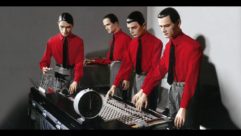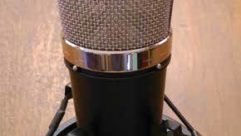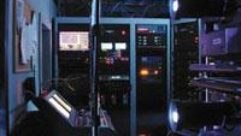Baby’s Bottom End
Jun 1, 2001 12:00 PM,
By Bruce Borgerson
YOU’LL KNOW ABOUT BABY’S LONG BEFORE YOU ENTER the club. You’ll know about it even before you get inside the Hard Rock Hotel in Las Vegas, where Baby’s makes its underground home. You’ll hear Baby’s bottom end in the parking lot, in the middle of the street; and, word has it, you can hear it even better in the basement of the San Tropez Hotel across the street.
But that doesn’t mean the sound in Baby’s is excruciatingly loud. It’s not. In fact, the sound is carefully shaped, steered and balanced to let club patrons enjoy a long evening inside the club with no morning-after ringing in the ears. It’s all part of a sound scheme intended to make Baby’s the hottest nightspot in America’s liveliest nightlife city.
“Baby’s is a club that you don’t understand unless you see it, and then you really don’t understand it,” teases lead sound engineer, Shannon Jeleneck. In a city heralded for innovations in entertainment technology, this statement certainly invites further investigation.
SUMMARY SOUND EXPANSION
Soundelux Showorks’ (now Showorks Entertainment) Las Vegas office was given the original contract to design and build the audio system for the main club room. Somewhere in the paper shuffling and budget cutting processes common to all such projects, the sound system was summarily value engineered. Jeleneck, who worked for Showorks before being lured away by the club, was assigned to the project in the final stages.When he arrived on site, he suspected the downsized proposal wouldn’t pass muster. It didn’t.
“Shawn McPherson looked at what we were going to put in there, and he immediately told me to double it.”
Jeleneck burned the midnight oil, and many megabytes of disk space, to quickly come up with a supercharged system design. He fired off a supplemental order to Martin Audio, and a fresh shipment of loudspeakers was dispatched directly to Las Vegas.
“From the day I arrived on the job until the day we turned the system on took about two weeks,” recalls Jeleneck. “I actually finished the last terminations on the system about 10 minutes after they started letting people through the door.”
COVERAGE CONCEPTS
Jeleneck’s task from McPherson was to create a system that delivers chest-pounding levels to the dance floor but still allows bystanders in the booth to have intimate conversations. Fortunately, the room acoustics proved reasonably cooperative.
“At first glance, it looks like a nightmare,” admits Jeleneck. “We have a lot of concrete and a lot of glass and mirrors on the walls. But off the dance floor, the other floor surfaces are all carpeted, and the ceiling is fiberglass. We hung our main speakers up on the grid behind the lights, firing almost straight down, but not perpendicular, to avoid standing waves. Most of the reflections that do come off the floor are soaked up by the fiberglass false ceiling or the acoustical treatment on the metalwork.”
Baby’s big bottom end is produced by a complement of Martin Audio subwoofers. Two FSX subs (2 by 18 inches each) are mounted in the grid-work above the dance floor. To augment these cabinets, and extend Baby’s subterranean impact, Jeleneck added four Martin WSX horn-loaded subwoofer cabinets (1 by 18 inches each). Placement was crucial to achieve the desired effects.
“I have two of them built into the wall underneath the booths. These speakers have 7-foot folded horns, which means the waveform doesn’t fully develop until you’re at the far wall of the club. These subs move a lot of air in the club, but you really hear them more outside. It’s kind of a teaser sound. You also hear them very well in the basement of the San Tropez casino across the way. Give them a call if you like. They just love me over there.”
Two more WSX subs are mounted in an empty, unused room with three concrete walls and a single wood/drywall surface adjoining the main club room. “It was supposed to be another bar, but they couldn’t put it there because of fire code issues,” says Jeleneck. “So they walled it in. We put two subs in there, pointed them at the wall and wired them out of phase. It makes a great low-end resonator. The ceiling of it is also the floor of the VIP lounge, so we shake the seats up there.”
SAVVY MID-HIGH SHAPING
For the middle and high frequency ranges, the dance floor system employs eight Martin W3 systems flown above the grid. (The W3 is a three-way system with 1 by 15 inches, 1 by 6.5 inches and 1 by 1 inch.) Six Martin W0.5 (1 by 8 inches, 1 by 1 inch) provide mid-high fill to the booths, with levels adjusted as needed by a separate matrix feed. Mid-high sound in the semi-enclosed VIP lounge is supplied by eight Martin EM15 fill speakers (2 by 5 inches) while a pair of Martin EM76 cabinets (1 by 12 inches, 1 by 1 inch) serve as monitors in the semi-isolated DJ booth. According to Jeleneck, these speakers were selected, aimed and equalized with a single goal in mind: maximum impact with minimum listener fatigue.
“Down on the dance floor, I admit it’s loud…ear-bleeding, chest-pounding, heart-restarting levels. It’s about as loud as OSHA allows, which is around 120 to 125 dB on a C-weighted curve. But past that, the system is pretty heavily limited, so if a DJ starts to push the system, it can’t hurt anybody.
“Although the system sounds quite loud and feels very loud, it doesn’t grate on the listener. There’s no sharp edge to it. It’s as smooth as a…well, you know.
“We want people to stay in the club. We want them to spend money at the bar,” states Jeleneck. “If people don’t want to stay in the room, then we won’t make any money. So our system is clear and very intelligible; you can stay in the club comfortably for five or six hours at a stretch. And that’s where the Martin system really comes in handy. It has what I call a characteristically British sound. It controls the high end, so you get good intelligibility and clarity on things like cymbal crashes. Where some systems lose intelligibility in the midrange and get muddy, the Martins actually clean that up, so you don’t have to push your highs too hard to maintain intelligibility. At the same time, you can get more apparent loudness without fatiguing your listeners.”
POWER AND SOURCE
A battery of Crown and QSC amplifiers, all racked in the DJ booth, powers the main room system. Three Crown VZ5002 units provide the low-end seismic punch, while four QSC PowerLight 1.6 amps drive the W3 main full-range cabinets; and four more QSC PLX 1600 amps are assigned to the surrounding booth and fill speakers. A single Crown MA2400 powers the DJ booth monitors.
System processing is handled by a BSS Omnidrive Compact FDS-355, with touch-up EQ adjustments made using a pair of Sabine Graphi-Q units.
Since many of the touring DJs prefer to bring along their own effects racks, the house equipment emphasizes quality basics: a Pioneer DJM-500 mixer, two Pioneer CDJ-100 CD players and three Technics SL-1200 turntables. An interesting innovation for the latter is a turntable isolation scheme devised by Jeleneck.
“A lot of clubs will pour solid concrete pillars for mounting the turntables,” he notes. “That’s okay if you are flying the subs or even have them sitting on the floor. But it wouldn’t work here. We are intentionally coupling the bass to the entire building, and that would make the pillar a conductor of low-end energy. To isolate the turntables from the building, we cut out holes in the DJ desk a few inches larger than the turntables, suspended concrete blocks in the holes on bungee cords, and put the turntables on the blocks.”
“SHAG” STUFF
The adjoining Shag Lounge was originally intended to be a low-key, cigar bar affair. But about a year after opening, management decided to upgrade the space into an alternate dance lounge with its own DJ booth and comparable high-energy sound system. Despite the proximity of the two spaces, both systems can operate at full volume with essentially no distracting interference.
“Surprisingly, we have very little bleed between the rooms,” comments Jeleneck. “We have the main room DJ booth on the near wall and restrooms in between. Because of the way the hallway is designed, it works out quite well. You get some low-end as you walk from the main room to the lounge, but two feet into the room it’s gone.”
The lounge system was designed as an in-house project by Jeleneck, who came on staff at the Hard Rock shortly after the club opened. Once again, the system is built around an ample complement of Martin Audio loudspeakers. Here, low-end is generated by two EM251s on the dance floor and an EM150 sub hidden in the ceiling grid. For the small dance floor, two W2 cabinets (1 by 12 inches, 1 by 1 inch) generate mid-high energy, while four EM26 speakers (1 by 8 inches, 1 by 1 inch) are deployed to cover the surrounding seating and bar areas. Amplifiers are again a mixture of Crown (MA3600 and MA1200 for subs, two MA24×6 for dance floor mid-high systems) and QSC (four PLX1600 for fill speakers, one PLX1600 for booth monitors). The DJ equipment here is similar to the main club booth except only one CD player and two turntables are provided, and booth monitors are Martin EM26s. Processing and equalization functions are assigned to a BSS FDS-355 OmniDrive, a Martin controller for the smaller enclosures, and a Sabine Graphi-Q equalizer.
LIT FOR EFFECT
When former co-owner Shawn McPherson first conceived of Baby’s, he set a goal of creating a club atmosphere that had never been seen before in Las Vegas. In the words of Jeleneck, McPherson wanted “a room that sounded great and looked incredible, yet was very comfortable and cozy.”
To that end, the club design shirks any pretensions of high-tech overload. Speakers are concealed in the ceiling grid-work so that, when the work lights are out, they cannot be seen. Originally, all lighting equipment was concealed as well, tucked up in the ceiling or hidden behind scrims. However, the complement of 10 new Martin Mac 250 devices is open to view, as these yoke-mounted moving head lights must hang into the space in order to function. Other lighting devices include oil wheel projectors, slide projectors and a full complement of floods and spots with massive quantities of gel for color.
BABY’S BOTTOM LINE
Baby’s has been a star attraction at the Hard Rock Hotel since the night it opened, and the club’s drawing power has not diminished since.
“Our numbers at the door are incredible,” Jeleneck states. “We have people waiting in line up to four hours on some weekends. Women are admitted free, as are special guests, so we don’t have an exact count. But we usually have 1400 paid in and out on a weekend night, which means we have total circulation through the club of over 2000. Basically, it’s packed with people who want to get close and personal and who love great dance music and just can’t get enough of it.”
Baby’s has become a regular tour stop for noted European and American DJs, and many have complimented Jeleneck on the quality of the system.
“You can’t really get a feel for the system from the booth,” he says, “but nearly all the DJs who go down on the floor to listen to it say they love it. One of the most popular guest DJ teams is Scooter and Lavelle, and they say it’s one of the best sounding systems they’ve ever used. We also have a lot of European DJs coming through, and they’re also big fans, perhaps because they’re used to the sound of the Martin speakers.”
Despite all the success, Baby’s has no immediate plans for expansion primarily because of the logistics of expanding an underground chamber. Moving above ground is a possibility, but that would change the whole underground feel of the place, as well as the unique seismic qualities of the club’s bass sound.
“The motto of Baby’s is, ‘Can you feel it?’” notes Jeleneck. “Well, the answer is, yes, you can. You feel it, and all the neighbors feel it, too. Our bottom end is a big part of the Baby’s experience. It wouldn’t be the same without it.”
Bruce Borgerson is the sole proprietor of Wavelength Communications in Ashland, Oregon. Wavelength Communications is a marketing communications and consulting firm that specializes in professional audio.
FOR MORE INFORMATION
BSS Audio
www.bss.co.uk
Circle 180 on Reader Service Card
Crown
www.crownaudio.com
Circle 181 on Reader Service Card
Martin Audio
www.martin-audio.com
Circle 182 on Reader Service Card
Pioneer
www.pioneerelectronics.com
Circle 183 on Reader Service Card
QSC
www.qscaudio.com
Circle 184 on Reader Service Card
Sabine
www.sabineusa.com
Circle 185 on Reader Service Card
Technics
www.technics.com
Circle 186 on Reader Service Card
Yamaha
www.yamaha.com
Circle 187 on Reader Service Card










